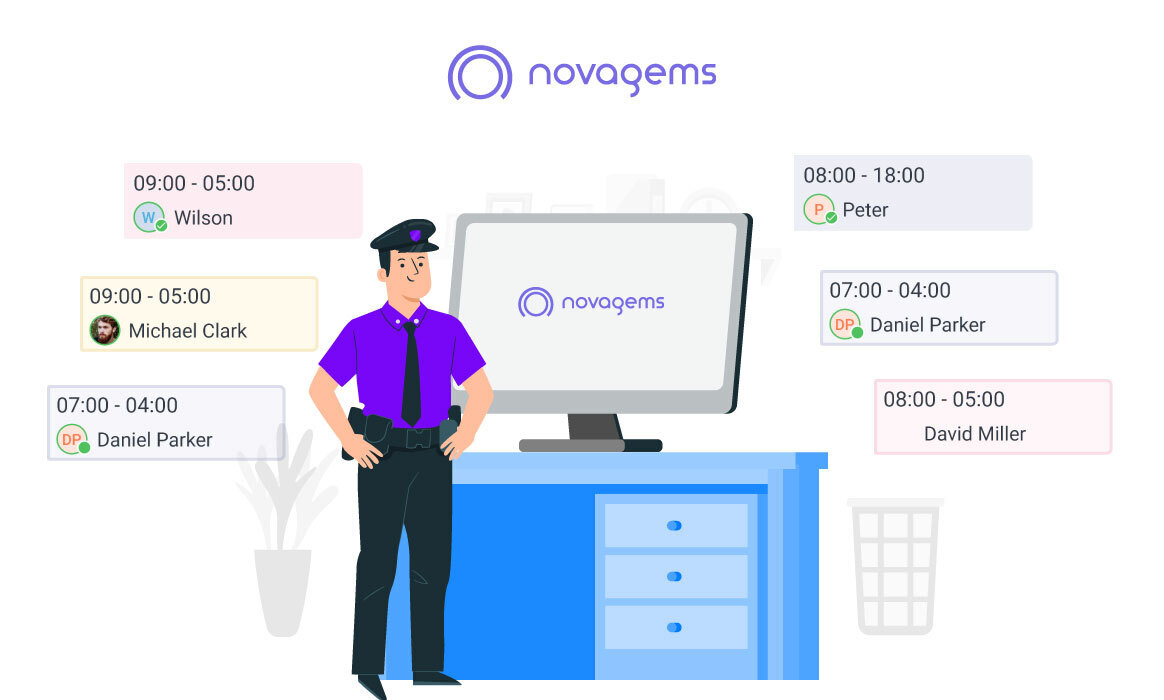Are you frustrated by inconsistent and unreliable inspection outcomes in your factory? Do you long for a reliable method to monitor and enhance product quality? Your search ends here! Statistical process control (SPC) techniques are the solution that will transform your factory audits and product inspections. With SPC, you can gain invaluable insights into your manufacturing processes, make informed decisions based on data, and ultimately elevate the quality of your inspections to unprecedented levels. In this blog post, we will delve into the advantages and applications of SPC in factory audits and product inspections. Discover how implementing SPC can help your business thrive in today’s competitive market.
Understanding Statistical Process Control and Its Significance
Businesses can effectively monitor and enhance their manufacturing processes by utilizing Statistical Process Control (SPC). This powerful tool involves the collection and analysis of data to identify any variations or trends within the production process. By implementing SPC techniques, factories can consistently uphold the necessary quality standards for their products.
- One of the key advantages of Statistical Process Control (SPC) is its ability to offer real-time insights into the manufacturing process. By constantly monitoring the production line, any deviations or abnormalities can be identified early on, enabling swift corrective measures. This not only reduces the likelihood of defective products but also minimizes waste and rework.
- Moreover, SPC empowers businesses to make decisions guided by data. Rather than relying on guesswork or intuition, managers can base their choices on concrete evidence. This not only enhances the precision of decision-making but also boosts the overall efficiency and productivity of the factory.
- SPC is also valuable in preventing expensive recalls and customer complaints. By identifying and resolving quality issues early on, businesses can prevent the negative consequences of product recalls, protecting their reputation and finances.
- Implementing Statistical Process Control (SPC) is essential for factories aiming to enhance their inspection outcomes. SPC enables a proactive quality control approach, ensuring consistent and dependable product quality. By adopting SPC, factories can stay competitive in today’s demanding market.
Harnessing SPC Techniques for Factory Audits
Before businesses can effectively utilize Statistical Process Control (SPC) techniques for factory audits and product inspection in India, it’s crucial to have a clear understanding of the key steps involved in the process.
- To effectively implement statistical process control (SPC) in manufacturing, the first step is to identify the key control points within the production process. These critical stages are where the highest risk of quality variations exists. By directing our attention and resources towards these areas, businesses can prioritize their SPC efforts and ensure a more focused approach.
- After that, it’s crucial to set suitable control limits for each critical control point. Control limits are the thresholds that determine whether a process is considered under control or not. These boundaries are established using historical data and the desired quality level.
- After setting up the control limits, businesses can begin gathering and analyzing data from their manufacturing process. This data may include measurements of product dimensions, weight, or any other quality attribute that is important for inspection. By comparing the collected data to the established control limits, businesses can easily identify any deviations or trends that might suggest a possible quality concern.
- Once the data analysis from SPC techniques is complete, the next crucial step in utilizing them for factory audits is taking corrective actions. These actions may involve making adjustments to the manufacturing process, providing training to employees, or modifying equipment settings. By addressing the underlying causes of quality variations, businesses can establish a foundation for consistent and reliable product quality.
To effectively utilize statistical process control (SPC) techniques for factory audits, a systematic and data-driven approach is essential. By implementing these techniques, businesses can enhance their inspection outcomes, enhance overall product quality, and gain a competitive advantage in the market.
How to Implement SPC in Product Inspection?
If you want to improve the overall quality of your products, it is crucial to implement Statistical Process Control (SPC) techniques in your product inspection. Here are some effective steps for implementing SPC in your product inspection process:
Step 1: Establish the standards of inspection: Begin by precisely outlining the criteria that must be met for your products to be deemed acceptable. This could encompass measurements, specifications, or any other pertinent quality characteristics.
Step 2. Collect data: Next, collect data from your inspections that align with the defined criteria. This data can include measurements, observations, or any other relevant information that will help you monitor the quality of your products.
Step 3: Analyze the data: Now it’s time to analyze the data you’ve collected. Utilize various statistical tools and techniques to examine the information in depth. Look for patterns, trends, or any deviations from your desired standards. This analysis will help you identify potential quality issues and enable you to take appropriate actions accordingly.
Step 4: Implement Corrective Actions: Once the data analysis is complete, it’s time to take necessary actions to address any quality issues that have been identified. These actions may involve making adjustments to the manufacturing process, providing additional training to employees, or modifying equipment settings as needed.
Step 5: Monitor and Continuously Improve: It is important to constantly monitor the product inspection process and gather data consistently. This will enable you to assess the effectiveness of your corrective measures and make any necessary improvements going forward.
By following these steps, you can successfully implement statistical process control (SPC) in your product inspection process and ensure consistent and reliable quality. SPC allows you to make informed decisions based on data, reducing defects and achieving higher levels of inspection accuracy.
Advantages of Applying SPC in Factory Audits and Product Inspection
Integrating Statistical Process Control (SPC) techniques into factory audits and product inspections brings numerous benefits to businesses. By utilizing SPC, factories can enhance their inspection outcomes and uplift the overall quality of their products, granting them a competitive advantage in the market.
- One key benefit of Statistical Process Control (SPC) is its capability to recognize and tackle quality concerns at an early stage. By consistently monitoring the production line and analyzing real-time data, any deviations or variations can be promptly identified. This enables quick corrective measures, reducing the chances of defective products, minimizing waste, and avoiding expensive rework.
- In addition, utilizing SPC allows businesses to make informed decisions based on reliable data. Instead of relying on guesswork, managers can make precise choices that enhance the factory’s efficiency and productivity. This approach not only guarantees consistent product quality but also boosts customer satisfaction and loyalty.
- Implementing Statistical Process Control (SPC) not only helps prevent expensive recalls and customer complaints, but it also allows businesses to proactively identify and address quality issues. This approach safeguards their reputation and financial stability. Moreover, by consistently delivering high-quality products, businesses can establish trust with customers and secure a strong competitive position in the market.
Overcoming Potential Challenges of SPC Integration
Like any new implementation, integrating Statistical Process Control (SPC) techniques into factory audits and product inspections can present challenges. However, with careful planning and proactive measures, these challenges can be overcome to achieve a successful integration.
- Resistance from employees is one potential challenge when integrating SPC. Change can be met with apprehension, especially if employees are not properly trained or informed about the benefits of SPC. To overcome this challenge, it is crucial to involve employees from the start and provide comprehensive training on the concepts and tools of SPC. By fostering a culture of continuous improvement and highlighting the positive impact of SPC on their work, employees are more likely to embrace the integration.
- Implementing SPC can also pose challenges due to its complexity. Collecting and analyzing data, for instance, can be a time-consuming process that demands technical expertise. To address this challenge, it may be beneficial to invest in software or tools that streamline data collection and analysis. Furthermore, offering training and support to employees will help them acquire the necessary skills to utilize these tools effectively.
- Maintaining data accuracy and consistency can present challenges. Inaccurate or inconsistent data can lead to misleading analysis and incorrect decision-making. To address this challenge, it is crucial to establish clear guidelines and protocols for data collection, ensuring that all employees follow them consistently. Regularly reviewing and validating the data will help identify and resolve any potential issues that may arise.
- Finally, one of the challenges in using SPC techniques is maintaining momentum and ensuring ongoing adoption. It’s common for organizations to fall back into old habits or lose sight of the importance over time. To overcome this challenge, it’s essential to establish regular review processes and performance metrics that track the effectiveness of SPC. Additionally, continuous communication highlighting the positive impact of SPC on inspection results and celebrating successes can help maintain motivation and keep everyone engaged.
By acknowledging and proactively tackling these potential obstacles, businesses can effectively integrate SPC techniques into factory audits and product inspections. Through careful planning, training, and support, businesses can overcome these challenges and experience the advantages of enhanced product quality and a competitive edge in the market.
Conclusion
In today’s competitive market, it is essential for factories to consistently produce high-quality products in order to succeed. One effective way of achieving this is by implementing Statistical Process Control (SPC) techniques during factory audits and product inspections. By doing so, businesses can enhance their inspection results and overall product quality.
By implementing Statistical Process Control (SPC), factories can gain invaluable insights into their manufacturing processes. This enables them to make informed decisions based on data and take proactive measures to address any potential quality concerns. As a result, the risk of producing defective products is minimized, wastage and rework are reduced, and costly recalls are prevented. With SPC, factories can maintain a competitive edge by establishing a reputation for consistently delivering reliable product quality.
Although there may be some challenges when integrating SPC techniques, effective planning, involving employees, providing thorough training, and utilizing specialized tools can help overcome these obstacles. By fostering a culture of continuous improvement and highlighting the positive impact of SPC on employees’ work, factories can cultivate a proactive approach to quality control.
In summary, factories can achieve significant improvements in inspection results and product quality by utilizing SPC techniques. Whether it’s a factory audit in India or any other location, implementing SPC can help businesses thrive and maintain a competitive edge in the market. So, there’s no need to wait any longer – embrace SPC and elevate your inspection results to new heights!



